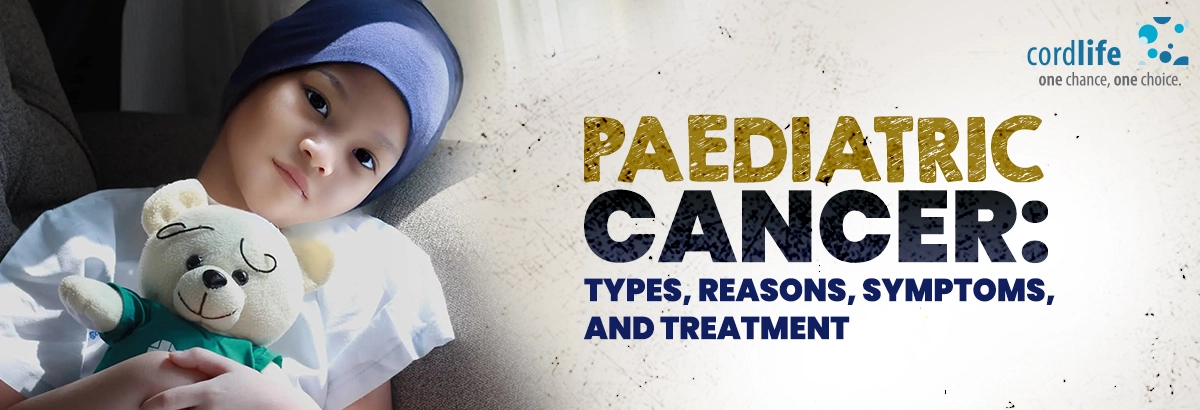Table of Contents
The cells in the body manage the other cells, control their life, and interact with them. Sometimes, these healthy cells change and grow uncontrollably. The uncontrollable growth of the cells is believed to be affected by cancer. Although this life-threatening disease can affect every age as well as gender, paediatric (childhood) cancer is rare. Only 1 in 285 children can be diagnosed with cancer.
What are the Pediatric Cancer Causes?
Lifestyle factors – smoking, being obese, not being physically active, being on an unhealthy diet, as well as intake of alcohol that can cause cancer in adults wouldn’t match with the factors that could give rise to the different types of cancers in children – Leukemia, Lymphoma, Brain cancers (and other central nervous system cancers), Thyroid cancer, etc. The following are probable risks associated with cancer in children:
The Genetic Factors
8- 10% of all cancers in children are caused by inherited pathogenic variants in a cancer predisposition gene. Experts in the field of cancer research have studied that genetic factors contribute to childhood cancer. Genes help in the cell growth. They are made up of DNA. Every time there are two new cell divisions from a single cell, there is a copy of DNA. Going deeper, just like a child inherits genes, they inherit DNA too from their parents. DNA mutations or changes are associated with an increased risk of cancer. Retinoblastoma, or Wilms Tumour, are some of the cancer types that occur due to genetic mutation. Another example is children with Down’s syndrome (a condition which has an extra chromosome).
The Exposure to Radiation
A child’s exposure to radiation at an early age in their life has a high risk of developing cancer. Research shows that those born in Japan during the atomic bombing is an example of this. The Chornobyl Nuclear Reactor Disaster in 1986 caused thyroid cancer in children over there. Childhood leukaemia was a consequence of the Chornobyl incident too. It took place five years after the disaster, and it was mostly apparent in children of less than 10 years. Times have changed a lot since World War. In today’s days and ages, mobile phones or smartphones are an essential part of life. However, the electromagnetic fields and radiation from mobile phones have increased the chances of Childhood leukaemia.
Contact With Infections
Infections like the Epstein-Barr virus (EBV) are the most common among infections among young children. Though this doesn’t have symptoms, the children may suffer from glandular fever. This is an unpleasant form of fever that continues for weeks. In rare cases, this infection can cause Hodgkin lymphoma and Burkitt’s lymphoma.
Problem During Pregnancy
Some childhood cancers start when the baby is inside the would-be-mom’s womb. Inside the womb, most of the organs such as the eyes and kidneys are formed earlier on. However, sometimes, some things can go wrong. The cells in a child’s body are expected to mature to form different parts of the body, but they don’t. Immature cells stay where they are, without causing any trouble. By the time, the child is 3 or 4 years old, these cells grow uncontrollably, and become the cause of childhood cancer. Wilms’ tumour, a type of kidney cancer, and retinoblastoma, which is retinal cancer, are some such examples.
What are the Childhood Cancer Symptoms?
Most childhood cancers have symptoms like the seasonal cold and flu, children are prone to. Headaches and stomach-aches are some of the common ones.
If the symptoms persist with unexplained weight loss, headaches, increased swelling, lump or mass in the child’s belly, armpits, neck, or chest, nausea, and tiredness, visiting the healthcare provider becomes a must2.
What are Treatment Options For Childhood Cancer?
A detailed physical examination of the symptoms followed up with a few diagnostic tests – biopsy, blood tests, CT or CAT scan as well MRI would confirm cancer in a child. Having said that, the earlier the cancer is detected, the cancer treatment would be faster. The paediatric oncology treatment would be based on their age and the types of cancer.
- Chemotherapy is a commonly used therapy for cancer treatment. Its primary function is to destroy cancerous cells. However, it is important to note that chemotherapy can have significant side effects and can cause damage to the body. Children can have a hard time with chemotherapy, as it can disrupt the production of new healthy cells and make them more vulnerable to infections. Radiation or radiotherapy is done along with chemotherapy.
- Surgery involved the removal of the infected area.
- Stem cell transplants use stem cells from the peripheral blood, bone marrow, or umbilical cord blood to replace the cancerous or damaged stem cells with healthy ones, after the destruction of the cancerous cells by Chemo and Radiotherapy. However, due to the lack of suitable donors, the risk of graft-versus-host-diseases (GVHD) and reduced immune restoration remains undeniable. Research shows that umbilical cord blood stem cells have been used for hematopoietic cell transplant (HCT) since 1989, and over 40,000 UCB transplants have been performed worldwide for various types of disorders. Umbilical cord blood which is a storehouse of very high-quality Hematopoietic stem cells (HSCs) and other types of progenitor cells can be used for stem cell transplantation in treating some childhood cancers. These HSCs can regenerate healthy blood cells. Therefore, saving cord blood has proven to be helpful for future use. A cord blood stem cell transplant is considered a promising alternative for childhood cancer treatment.
